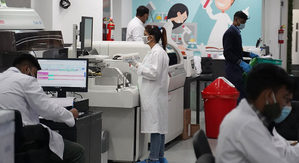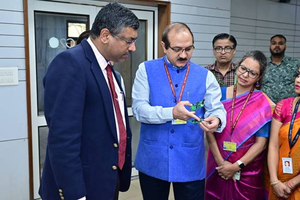Periscope Lens setting new trends in flagship-level smartphones
New Delhi, Dec 28 (IANS) Over the years, smartphone cameras have undergone a remarkable evolution. What started as simple devices for capturing basic images have now transformed into sophisticated systems capable of professional-grade photography.
This progression has seen the introduction of features like high-resolution sensors, optical zoom, ultra-wide lenses, and advanced software algorithms. Today’s smartphones are equipped with multiple lenses and AI capabilities, enabling users to capture stunning photos in various conditions.
Periscope lens usually comes with flagship-level smartphones and recently, some smartphone brands have introduced smartphones equipped with the periscope camera.
One of those is realme’s latest flagship smartphone, realme GT5 Pro, launched in China earlier this month. This smartphone intends to redefine telephoto imaging with its ground-breaking super-core telephoto imaging system and Periscope Lens: Cutting Edge Camera Technology.
Until recently, entry-level smartphones primarily focused on increasing the number of megapixels to enhance image quality. However, for premium smartphones, the trend is shifting towards improving the overall image quality rather than merely increasing the pixel count.
This is where periscope camera technology comes into play. A periscope camera allows for high-quality zoom without adding bulk to the phone by redirecting light at a right angle, akin to a submarine’s periscope.
This arrangement accommodates more lenses and increases power without thickening the phone. The sensor is strategically placed at a 90-degree angle from the prism, all housed within a compact casing, all housed within a compact casing.
The main advantage of a periscope lens is its ability to capture distant subjects without compromising image quality. Unlike traditional telephoto lenses that offer 2x or 3x zoom, periscope lenses can provide between 5x and 10x optical zoom without increasing the phone’s thickness. This allows users to take high-resolution photos of far-off subjects, resulting in sharper, clearer images.
Incorporating periscope camera technology into a smartphone is an upscale procedure, making it a unique feature in high-end flagship models. At present, the use of periscope lenses is rare and confined to the priciest top-of-the-line smartphones due to their high cost.
Over the years, realme has made substantial advancements in its camera technology, with the most recent and notable improvement being showcased in their recently-launched flagship model, the GT5 Pro.
Featuring a 50MP SONY IMX890 sensor and a 1/1.56-inch ultra-large sensor, the telephoto lens surpasses traditional upright telephoto lenses by 143 per cent, which costs four and a half times higher.
The telephoto lens supports 4-in-1 pixel fusion technology to achieve a 2 μm super-large pixel area, and increase light sensitivity by 215 per cent. With 3x optical zoom, OIS+EIS super stabilization, and full-pixel omni-directional focusing, the in-sensor-zoom technology allows for a lossless 6x zoom and an impressive 120x digital super zoom.
In addition to the periscope telephoto lens, the realme GT5 Pro comes equipped with 50MP SONY LYT-808 sensor, the largest main camera in realme’s history featuring a 1/1.4-inch sensor size and an f/1.69 aperture. This sensor significantly enhances low-light camera performance in terms of image quality, video recording, and HDR effect.
The periscope lens represents the latest advancement in smartphone camera technology. It offers a significant leap forward in terms of image quality and zoom capabilities, even within the compact form of a smartphone.
As we move into 2024 and beyond, we can expect to see the adoption of periscope lenses across all flagship phones, further enhancing our ability to capture stunning images on our devices. This innovation marks a promising future for smartphone photography.
–IANS
na/




